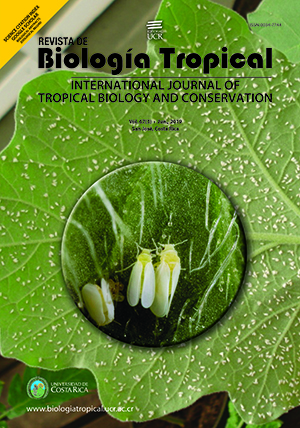Abstract
Introduction: Forest frogs that undergo direct development (no tadpole stage) rely heavily on moist microhabitats for their survival. Objective: To describe the abundance and microhabitat use and some aspects of the breeding behaviour of the threatened forest frog Platymantis hazelae at Twin Lakes Balinsasayao Natural Park, Negros Island, Philippines. Methods: From September 2016 to February 2017, we surveyed Platymantis hazelae using 27 (400 m2) plots in Twin Lakes Balinsasayao-Danao Natural Park in Negros Oriental, Philippines. Results: After a total of six months survey P. hazelae was found abundant in the montane zone with mean density ranging from 30.56±6.94 to 86.11±15.65 ind./ha. Fourteen environmental variables were measured and subjected to multivariate principal component analysis (PCA). PCA revealed that rainfall, altitude, relative humidity, and air temperature influenced the density of P. hazelae. Screwpines (Pandanus) leaf axils and leaves (51.56%) and palm leaves (14%) were the preferred microhabitats for the species. Details of physical characters of embryos and froglets are also described. Conclusions: P. hazelae was found abundant in higher elevations (sub-montane and montane zones) where ambient temperature was generally lower, higher rainfall and relative humidity and microhabitats (e.g. screwpines) remain intact and abundant.
##plugins.facebook.comentarios##

This work is licensed under a Creative Commons Attribution 4.0 International License.
Copyright (c) 2019 Lilibeth A Bucol, Abner Aguilar Bucol






